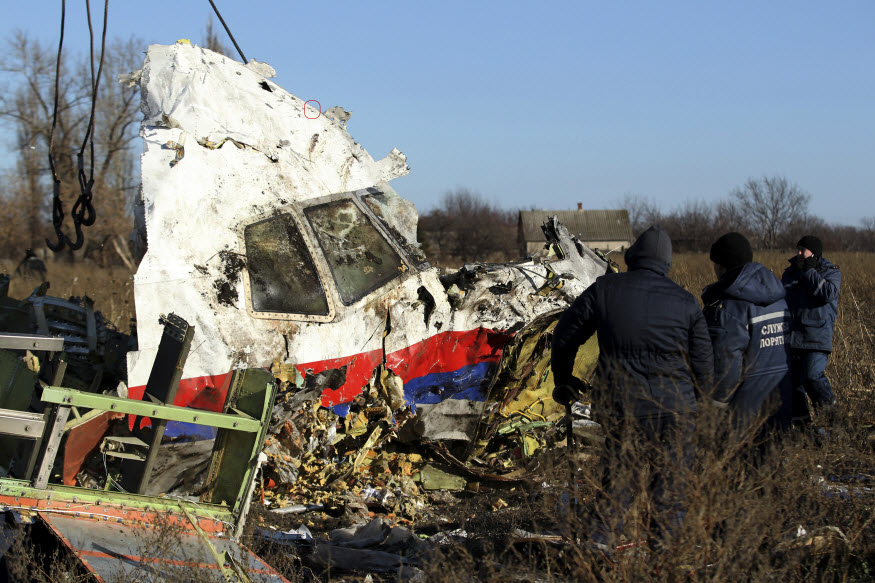Even if the point of exploding of AA is correct, there is still a big variable which is unproven in the AA point of exploding, the angle (or heading) of the missile.
At this moment is assumed the trajectory of the missile is 20 degrees, which is for me still a very big questionmark. This trajectory doesn't match with the basic principle of the radar of the missile and with the functionality of the proximity fuse (although i have to admit, i need more information on that to be sure).
Almaz-Antey spread out information about meeting course plane-missile for both Zaroschenskoe and Snizhne.
The velocities involved are big, the errormargins so very small. 1/10 of a second difference in timing means a gap of 125 meters between the plane and missile (252 m/s of the plane and 1000 m/s of the missile), even 0,05 of a second already means the difference between 'succes' and 'failure'.
It is absolutely nothing for work fuse. Detonation happen with speed 8000 m/s which much more then other speeds.
The radar of the missile has a variable angle between 30-60 degrees.
It wrong information - radar have angle from -90 to +90 to both axis.
The missile will adjust its trajectory depending on the result of this radar, but at the same time always makes sure the new trajectory is never outside the margins of the radar angle of 30-60 degrees.
Missile dont adjust trajectory. Trajectory pattern for missile is result of calculation next things:
1. Mode of fire
2. Location of Meeting point
3. Type of target
4. Speed and course of target
5. Relative position of TELAR (TEL) to target course
When missile readying to start all that info downloading to missile computer so missile know what angle must choose radar seeker for lock target on final stage. All other targets ignored as false/wrong.
At launch of the missile the width of the angle in km is big, but the closer it gets to its target, the narrower it gets. A launch from Zaroschenskoe will show a curved (in 2D horizontal spectrum) trajectory then a launch from Shizne.
Missile dont have target for seeker almost all flight except last km. But radar seeker have very wide radiation pattern so dont target narrow angle but measure power of signal in a few position of antenna during scanning. Correction to course is result of choosing best power of signal.
Look on picture

My personal opinion is the trajectory of a missile launched from Zaroschenskoe should be bigger, how much i can't tell (yet).
Do you have theory how proportional navigation work for Z and dont work for S?
What i am traying to explain:
there are several variables that needs to be proven (launchlocations and angles) we cannot proof variable 1 with using one of the other variables. We have to do step by step.
1st: the best estimate of the point (both vertical and horizontal) of the moment of exploding.
2nd: the precise functionality of the radar and proximity fuse
Based on those answer, we could draw a conclusion on the possible launchingside.
We cannot pinpoint location of launch missile just because we cannot measure penetration angles on MH17 debris. We only can debunk lie about possible penetration angles based on math. And include such scenarios like launch from S in possible (or Z as impossible) just because it fit well in math model which simulated by Mick West.
Moment of exploding missile cannot be calculated with radar or fuse precision. Seeker dont know distance to target and measure angle to power center. Fuse know range only on terminal stage when seeker end his work and give to fuse command to ready exploding. But radiation pattern for fuse is wide enough for cover 180 degree area around missile (each antenna).
P.S. Another reason why missile from Z is impossible shown on picture above - seeker should choose best power position of target and from side it is fuselage near centerplane, dont nose part.













